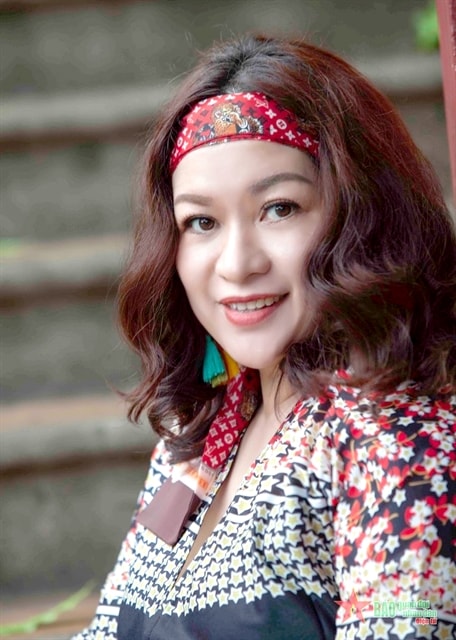 |
| Script writer and director Hồng Hoa. Photo ct.qdnd.vn |
The Central Highlands Đắc Lắc Folk Art Troupe performed the musical Khát Vọng Dam Săn (Dam Săn Inspiration) in Hà Nội on Sunday. The story was penned by Hồng Hoa and based on Trường Ca Dam Săn (The Great Epic of Dam Săn), a seven-chapter long narrative of the Ê Đê ethnic people in the highlands, with the score composed by veteran musician Nguyễn Cường.
The musical script writer and director Hồng Hoa told us about the work.
How did you co-work with musician Nguyễn Cường for the musical?
Cường and I had worked together before. I knew that he had nurtured a dream to compose a musical based on the Dam SănEpic. He once said anyone who comes to the Central Highlands is 'haunted' by the words Dam Săn and I was not an exception.
It can be said that Dam Săn inspires us to dream about the majestic beauty of the mountains and forests, where the sound of wind blends with the sound of gongs and songs, and festivals are as necessary as breathing.
I loved Central Highlands from the moment I first set eyes on it, when I followed Cường there. I think one of the reasons for this love of the place is his music, it entices people, including me, to go there. That is why we worked together on the musical.
It takes quite a long time to recite the original epic, so how did you put it into a 70-minute show?
The epic space of Dam Săn, which is long rhyme story, is associated with traditional beliefs and rituals. It tells the story of a heroic chieftain namedDam Săn, who is an ideal leader with strength, talent and courage.
The epic is just like a large theme, reflecting on the cultural life and how you are anchored by the traditional values of the Ê Đê ethnic group.
It also conveys a profound message about the sustainable relationship between humans and nature. Dam Săn dares to dream of marrying the Sun Goddess. It is part of the Central Highlands culture and the typical characteristics, quite different from other tales, so this is a big message about the desire to be in harmony with nature.
Therefore, in addition to affirming the folk cultural values of the epic, the musical must further clarify that humans should be friendly with the environment and show a civilised behaviour towards nature.
How did the Central Highlands people receive the musical?
I got a lot of support from the Ê Đê people when I showed them the musical script. They told me that chieftain Dam Săn in the musical keeps the Central Highlands spirit alive, he embodies the aspiration for a great unity of spirit, for the community of ethnic groups to build a warm, happy and prosperous life together.
The Central Highlands people are proud of the Ê Đê epic, which opposes the ideas of a slash-and-burn of modern life. The ideology of the epic Dam Săn is great. I wanted to portray a heroic chieftain who wishes to protect and build his village to be prosperous. Hopefully, we will continue to perform the musical in the province making it a cultural product.
What are the advantages and disadvantages of this musical?
We always received the sympathy, support and positive reception from the provincial authority. For me, the musical has never been something difficult, because of the love of the people in Central Highlands.
I would like to add that we have taken into account the ability to perform in different venues, so the piece is convenient in terms of staging for art troupes.
I hope that art groups will continue to perform the music and add in their own creative impulses. I think that art needs to be for community and received by the community.
Will you have other projects after the musical?
Cường and I have completed a musical about national hero Hoàng Hoa Thám and another about the Buddhist King Trần Nhân Tông.
This is our passion for those who love folk culture, especially folk songs and chèo (traditional opera). VNS


